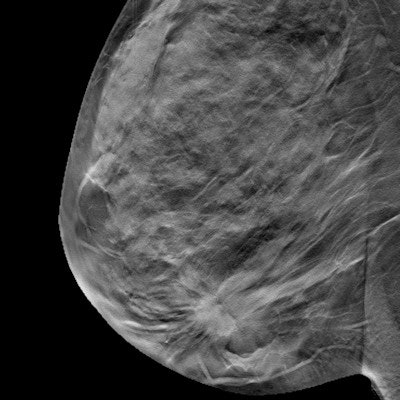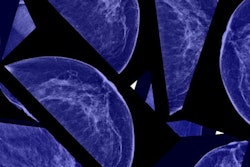
Using digital breast tomosynthesis (DBT) for surveillance after a woman undergoes a breast conservation therapy protocol -- that is, lumpectomy and radiation -- reduces unnecessary workup compared with full-field digital mammography (FFDM), according to a study published online July 15 in the American Journal of Clinical Oncology.
DBT surveillance also translates to improved cost efficiency for the healthcare system, wrote a team led by Dr. Shaakir Hasan of Allegheny Health Network Cancer Institute in Pittsburgh.
"Our study suggests that although DBT is a more expensive diagnostic tool compared with FFDM, the relative reduction in additional downstream imaging may ultimately reduce healthcare costs," the group wrote. "When obtained at least six months after radiation, surveillance DBT following breast conservation therapy likely optimizes the rate of unnecessary workup, which is not only important for healthcare expenses but for patient peace of mind."
DBT has been lauded for its increased sensitivity in finding cancer and, therefore, its ability to lower recall rates. But it is more expensive than FFDM, and not much data exist regarding its use for follow-up imaging after breast conservation therapy.
Hasan and colleagues addressed this gap in knowledge by conducting a study that included 450 consecutive breast conservation therapy patients with follow-up DBT or FFDM exams performed between 2015 and 2017. Of these exams, 162 were DBT and 288 were FFDM. Study endpoints were further workup after follow-up breast imaging and associated healthcare costs after one year. The group set DBT exam cost at $149 and FFDM exam cost at $111, using claims data from the Centers for Medicare and Medicaid Services Oncology Care Model.
In all, 20% of study participants received their first post-treatment mammogram within three months after being treated with radiation after surgery, while 32% received this first mammogram three to six months after radiation and 48% received it six months following radiation. Younger patients and those who underwent hypofractionated radiation courses were more likely to get DBT, the researchers noted. They found no differences in stage, receptor status, or mammogram timing between women in the FFDM group and those in the DBT group.
The researchers discovered that DBT not only reduced the percentage of women who required further workup six months after surgery and radiation therapy but also decreased cost when compared with FFDM.
| FFDM vs. DBT in women who underwent breast conservation therapy | ||
| FFDM | DBT | |
| Workup six months after treatment | 29% | 18% |
| Estimated cost per patient | $237.83 | $216.14 |
Post-treatment DBT was found to have an almost twofold reduction in short interval repeat mammography -- making it a good choice for reducing both workup and costs, the group noted.
"Consequently, although tomosynthesis is more expensive than standard mammography, the reduction in downstream workup expenditures made it more cost-effective within our network," the authors concluded.



















